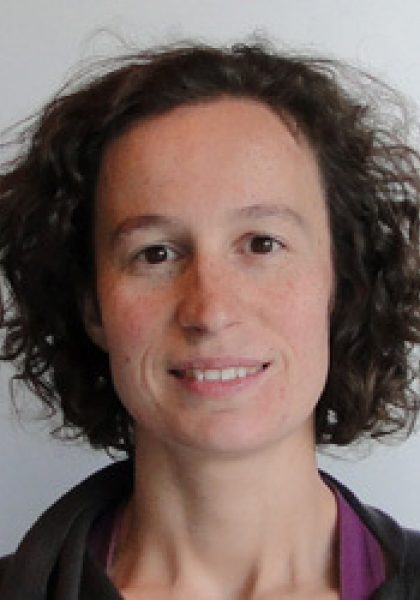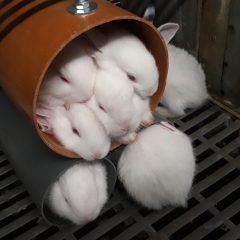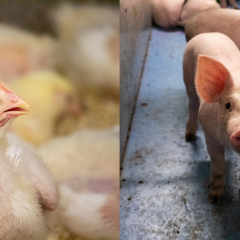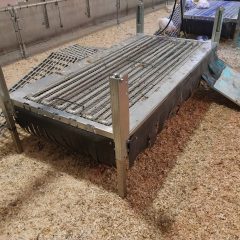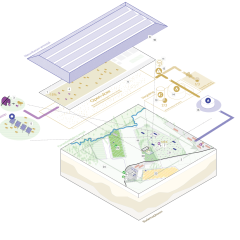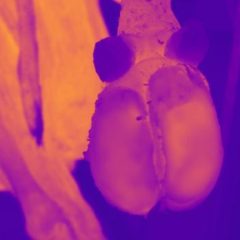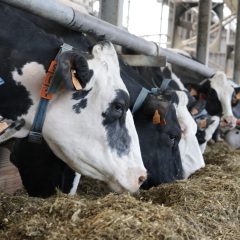Research project Improving the life production of dairy cattle by optimizing the nutrition and management of young stock in Flanders
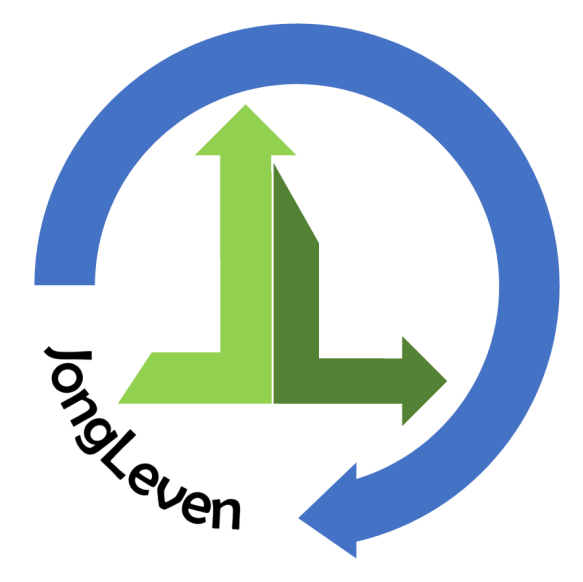
General introduction
This dairy farming project called "JongLeven" aims to provide Flemish dairy farmers with clear tools and guidelines to work on a more economical and sustainable husbandry of young cattle. At the end of this project, the researchers aim for an active growth monitoring (measuring/weighing) by dairy farmers so that their heifers calve at the optimal age of 24 months and the animals will enjoy a healthier and longer life, thus achieving better lifelong production.
Research approach
The project has now ended. A total of 4 animal experiments were conducted and the growth of young cattle was monitored on 30 Flemish farms. During the animal experiments at ILVO and Hooibeekhoeve, 4 feeding strategies were investigated: the ideal time to introduce maize silage, the physical structure of concentrate, ad lib milk intake and 'accelerated feeding' by increasing the milk feeding frequencies. In each instance, we assessed the impact of the feeding strategy during the calf period on growth performance, rumen development, fertility and milk production in the first lactation. Monitoring the growth of young cattle on 14 Flemish farms, which were selected as pioneers in young cattle rearing, led to the identification of the ideal growth path. The good practices of the selected farms and the knowledge achieved from the experiments at ILVO and Hooibeekhoeve have been applied to 16 farms. We disseminated the acquired knowledge through outreach publications, demonstrations and educational workshops, discussion groups, booklets and infographics, allowing dairy farmers and other stakeholders to implement improved practices on youngstock rearing.
Relevance/Valorization
The JongLeven project has generated a lot of useful knowledge. Robust heifers follow the growth chart to calve at the age of 22 months. This means that they reach the optimal insemination weight of 400 kg at 13 months of age. To achieve this goal, strict and close follow-up and working according to protocol are a must. Good practices regarding, colostrum management, control of coccidiosis, hygiene and biosafety on the company, … were bundled in a booklet and 4 infographics. Good practices and feeding strategies from the trials have been applied to 16 farms with a later (suboptimal) calving age. At 50% of the farms it was possible to reduce the age at first calving to 24 months through an improvement process. Examples of changes applied include adjustment of milk feeding and weaning strategy, colostrum management, avoiding drafts by installing windbreak nets to reduce respiratory problems or earlier insemination. The evaluation of feeding strategies and the monitoring of growth on the farms revealed that the young cattle diet is often unbalanced. This major point of interest has been tackled within the project by writing practical guidelines around updated requirements for heifers. These guidelines have been used to create a tool that allows the dairy farmer to calculate the heifer diet in a practical and easy way. At the JongLeven Knowledge Center, livestock farmers can find all the tools and practical information regarding young cattle rearing.
Financing
VLAIO
